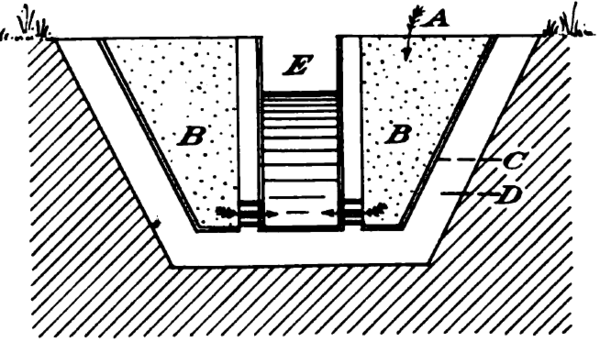
One simple way to collect and store potable water is with a Venetian cistern. In ancient times, Venetian cisterns were often constructed in courtyards near homes for easy access.
Construction details can vary, but the basic components are shown in the drawing above.
A – Rainwater or water from other sources such as streams enters the cistern through the top.
B – The water is stored in sand or gravel. Using gravel at the bottom will assist in removal of water.
C and D – A cistern lining contains the water and keeps out dirt, groundwater contaminants, etc.
E – The central water storage area is separated by a 2nd lining (shaft) to keep out sand and gravel. The water can be removed with pumps, buckets, etc. Using modern materials you could put well pipe in the middle instead of building it like a cistern.
Image source: Ben and Bawb’s Blog

A good historic drawing is at https://lcdl.library.cofc.edu/lcdl/catalog/lcdl:51760
Any pictures?
This crude drawing was the best I could find. If anybody find good photos or better drawings than please share. We know Venetian cisterns work since they were quite popular during parts of history. But for some reason they’re not widely used and documented at this time.
Another variant on this concept is the “gravel packed well.” I hand dug one of these many years ago, digging a cylinder about 4 feet across and 18 feet deep. Once the hole was dug I placed a perforated 20-foot culvert that was about 18 inches in diameter right in the center, then I packed the doughnut shape around it with gravel. The pipe stuck out of the ground a couple of feet and the last foot of the doughnut was covered with earth, with a membrane between it and the gravel. The idea is that water can seep into the gravel from the surrounding terrain and accumulate in the central pipe. This really only works if there is a shallow water table or a vein of water running by. It worked for me for many years.